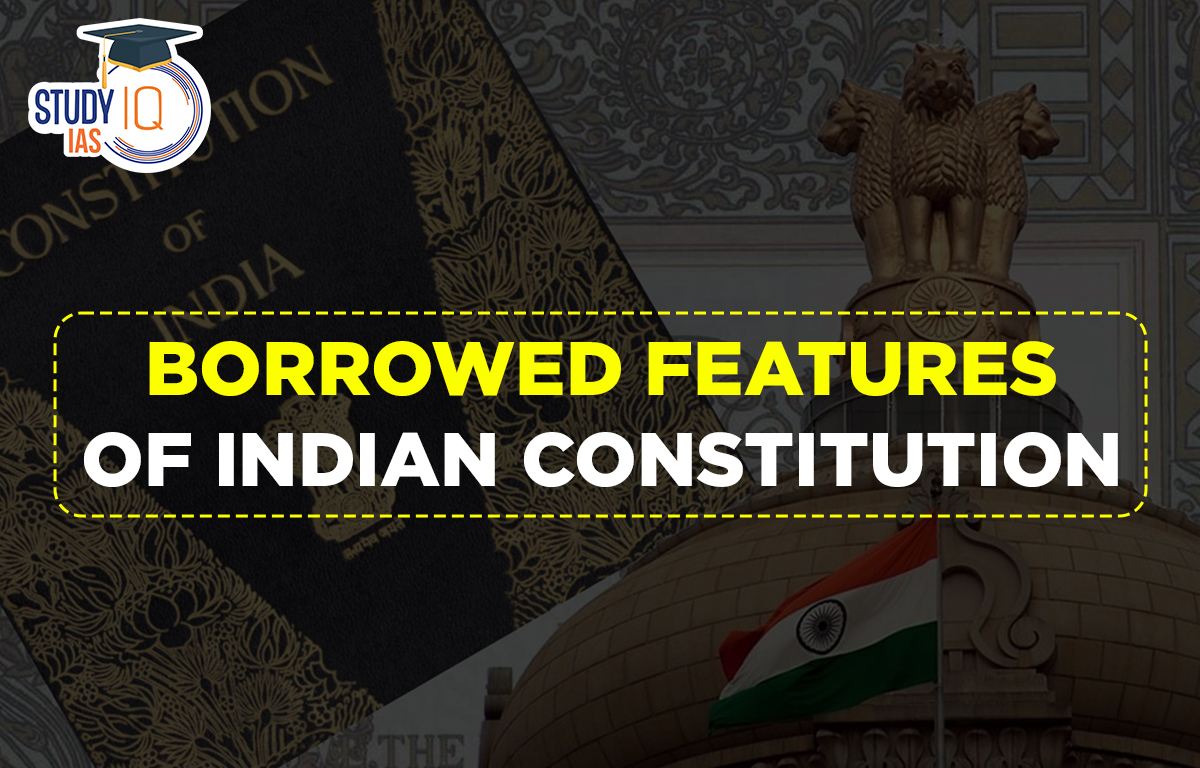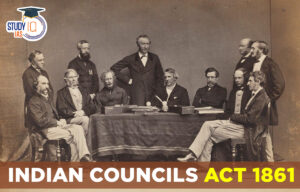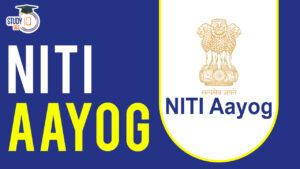Table of Contents
Borrowed Features of Indian Constitution
The Indian Constitution is shaped by various historical documents, events, and legal frameworks. Key sources include the Government of India Act, 1935, constitutional committee reports like the Nehru Report, and the Cabinet Mission Plan. It also draws from international influences like other countries’ constitutions, natural justice principles, and the Universal Declaration of Human Rights. Judicial decisions, parliamentary debates, and conventions further shape its interpretation and evolution.
Borrowed Features of Indian Constitution
The Constitution of India is the foundation of democracy. It guarantees citizens’ rights for a fair society. Adopted on 26th November 1949, it took effect on 26th January 1950. It evolved from the Government of India Act 1935, the longest act by the British, with 321 sections and 10 schedules, and drew from sources like the Simon Commission and Round Table Conference discussions. This act introduced dyarchy at the center and established the Governor’s office, concentrating executive powers. It proposed a Federal Legislature with two houses and promoted provincial autonomy, making governments accountable only to provincial legislatures.
The Government of India Act 1935 divided powers between the center and provinces into three lists: Federal (59 items), Provincial (54 items), and Concurrent (36 items), with residuary powers to the Viceroy.
From the UK:
- Parliamentary Government: A cabinet led by the Prime Minister governs, with a President as the nominal head of state. Opposition parties check the ruling party.
- Rule of Law: Everyone is equal before the law. Article 14 ensures equality.
- Single Citizenship: Citizens only hold Indian citizenship, not dual citizenship.
- Writs: Supreme and High Courts can issue writs (Habeas Corpus, Mandamus, Certiorari, Prohibition, Quo-Warranto) to protect rights (Articles 32 and 226).
From the USA:
- Fundamental Rights: Articles 12-32 list six fundamental rights.
- Judicial Review: Allows the judiciary to invalidate conflicting laws.
- Basic Structure Doctrine: Limits Parliament’s power to amend the Constitution.
From Ireland:
- Directive Principles of State Policy (DPSP) guide lawmaking.
From Canada:
- Federation with a strong center, residuary powers, and advisory jurisdiction.
From France:
- Ideals of Liberty, Equality, and Fraternity in the Preamble.
From Australia:
- Freedom of Trade and Commerce, Concurrent list, and joint sittings of Parliament.
From South Africa and Germany:
- Amendment procedure and suspension of rights during emergencies.
Read about: Important Articles of Indian Constitution
List of Borrowed Features of Indian Constitution
Here is a List of Borrowed Features of Indian Constitution and their respective source country is given below:
| Sources | Features Borrowed |
| Government of India Act of 1935 |
|
| United States of America |
|
| United Kingdom |
|
| USSR |
|
| Australia |
|
| Japan |
|
| Germany |
|
| Canada |
|
| Ireland |
|
| France |
|
| South Africa |
|
Read about: Preamble of Indian Constitution
Is Indian Constitution a Bag of Borrowing?
In response to this critique, Dr. B.R. Ambedkar (chairman of the Drafting Committee) during his speech at the Constituent Assembly stated that “One can wonder whether there can be anything new or unique thing in the Indian Constitution. “But in the true sense, the makers of the Indian constitution did not precisely imitate the features or aspects of other countries constitutions.
Instead, the makers made the necessary and possible adjustments to the borrowed features from the other constitutions in order to adapt them to the Indian conditions while at the same time putting aside their shortcomings.
Read about: Constitution Day of India


 Right To Information Act, Objective, Fea...
Right To Information Act, Objective, Fea...
 Indian Councils Act 1861, History, Provi...
Indian Councils Act 1861, History, Provi...
 NITI Aayog Report on India’s Hand and ...
NITI Aayog Report on India’s Hand and ...





















